India’s overwhelmed public health system crying for reforms
The Parliamentary Committee on Health and Welfare, in its recent report, had suggested that the public expenditure on health needs to be enhanced to at least 2.5 percent of GDP in the next 3 years, much of which should be invested in creating and modernising the strained infrastructure, reports V K Varadarajan for South Asia Monitor
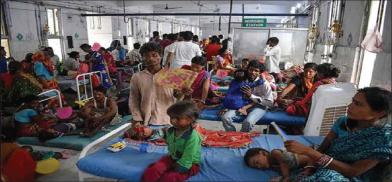
The heart-rending scenes of patients with acute respiratory distress lying outside hospitals and on ward floors because of bed shortage point to a crumbling public health system in India due to the extraordinary situation arising out of the Covid 19 pandemic. And the subtext to the moving scenes are the desperate SOS for oxygen, medicines and vaccination.
The cries of shortages, apart from the vulnerability of the health infrastructure system has laid bare the gaping holes in the armor of the battle against Covid 19 in its two phases.
Covid 19 is the second pandemic in 100 years but even with a vast change in the healthcare system and the infrastructure, they have come under severe stress, and the second wave has only worsened things by adding to their pressure and responsibilities. The vulnerability apart, the shortages of critical facilities and materials like the number of oxygen beds, supply of oxygen concentrators and cylinders to meet the huge demand for saving serious Covid patients’ lives and the frenzied demand for the anti-viral drugs, Remdesivir in specific, added to their challenges in managing the unrelenting crisis posed by the pandemic.
Government under fire
The trauma and deaths resulting from the corona pandemic has triggered criticism of the Indian government of Prime Minister Narendra Modi for its complacency and unpreparedness, despite adequate warning by scientific experts about the imminence of the second wave that has caused the present crisis.
When shortages of critical facilities and medicines hit the country, the government’s lack of prompt decisions heightened the gravity of the situation with the Supreme Court itself taking suo motu cognizance of the unresponsiveness of the government and coming out with an order to set up a 12- member National Task Force (NTF) comprising top experts and doctors from across the country to “facilitate a public health response to the pandemic-based issues on a scientific and specialized domain knowledge”.
The apex court had also asked the central government to rethink its handling of the national health emergency, urging the authorities to rehaul the vaccination program, augment oxygen supply and allow third parties to make patented drugs to overcome the scarcity.
While it remains to be seen how the new measure pans out, the problems at the ground level continue unabated. While the strident noise about oxygen seemed to have come down a few notches, the cry for a vaccine has ascended to a high pitch. With the government opening the counters to all adults starting from 18-44 age group up to 60 years and above, oblivious of the depleting stocks of vaccine, and the two companies -- Serum Institute of India and Bharat Biotech—promising to restart their supply only by July or August, it may not be before this yearend, or maybe even beyond, that the objective of so-called herd immunity can be achieved by covering 70 percent of the population.
Since the vaccination program was launched in the second half of January, only three percent of the population has received the prescribed two-dose jabs while 10 percent got only their first shot. Now with an extension of the schedule for second dose vaccination and uncertainty over the resumption of the supplies, an early relief for the people seems a distant dream.
So far the gamut of the healthcare services system has managed the crisis under great strain and through huge sacrifices by the frontline healthcare professionals and workers. Though, in the short term, the healthcare sector cannot take any drastic steps to go for an overhaul in the midst of the raging pandemic, which is spreading its fangs to rural areas with a telling impact, a long-term view of the issues affecting the sector will be in order, post-pandemic.
Expert views
Eminent medical professionals managing leading private hospitals have also underlined the need for a post-pandemic revamp of the healthcare policy focusing on increased spending, strengthening public healthcare, use of Information Technology and Artificial Intelligence in key areas of the healthcare delivery system.
Secondly, they have called for exploring the possibility of public-private partnership in the sector to meet the need for comprehensive capacity augmentation and modernizing the healthcare services in its entirety —diagnosis, treatment and delivery of wellness counseling.
Ramakant Panda, MD and Vice Chairman, Asian Heart Institute, Mumbai, in media interactions has said this pandemic has exposed the fundamental problems plaguing the Indian healthcare system, be it physical infrastructure, manpower, or health management.
“We don’t have an epidemic response mechanism and our public healthcare system is woefully underprepared,” he lamented.
He further said more public hospitals will be needed, and the focus needs to shift from disease management to health management. Patient education and prevention should assume emphasis in future planning.
Dr Naresh Trehan, Chairman and Managing Director, Medanta - The Medicity, Gurgaon underlined the increasing usage of technology such as Information Technology and Artificial Intelligence in the healthcare delivery system and said they came in handy in bridging the knowledge gap in handling Covid 19.
Long-term overhaul
A long-term policy perspective with a holistic approach would help address the fault lines to make the sector truly responsive for not only the curative nature of the services, but also in devising preventive strategies to minimize the pressure on the services and personnel at the time of emergencies like Covid 19.
For this, the country not only needs to focus on meaningful budgetary expenditure, but also on creating world-class training institutions to enhance the woefully low ratios in terms of patient care, be it doctor to patient, or the number of beds or nursing staff. The doctor-to-patient ratio in India is now 0.8 per thousand, while China, South Korea and some of the European countries average above 2. Germany and Italy have the highest number of doctors per 1000 people at 4.3 and 4 respectively.
Availability of government beds is abysmally low in India and a request had to be made to private hospitals to reserve 50 percent of their beds for Covid patients. Similarly, there is a shortage of nursing staff. Dr. Devi Shetty, leading cardiac surgeon, had said recently that at least 200,000 nurses would be needed to assist in the Covid 19 patient care. Unless India enhances the budgetary allocation substantially from the current 1.3 rpt 1.3 percent, the healthcare sector will continue to be under terrible pressure for years to come.
The Parliamentary Committee on Health and Welfare, in its recent report, had suggested that the public expenditure on health needs to be enhanced to at least 2.5 percent of GDP in the next 3 years, much of which should be invested in creating and modernising the strained infrastructure.
The Confederation of Indian Industry (CII) also echoed a similar view that the government must increase its investment in health to at least 2.5-3 per cent of GDP by the year 2025 to ensure affordable healthcare for all. CII said that India's current expenditure on healthcare was much lower as compared to peer nations in the OECD and BRICS countries.
Access to non-Covid health services has been severely constrained due to the reorienting of the already weak public healthcare services for tackling the pandemic. However, until Covid-19 plateaus from its recurring peaks, the overburdened healthcare system will have to bear the cross of faulty planning and misplaced priorities.
(The writer is a veteran journalist and economic analyst. The views expressed are personal. He can be contacted at varadarajan.krishnamurthy@gmail.com)





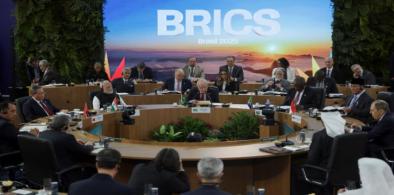
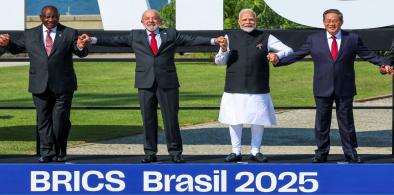


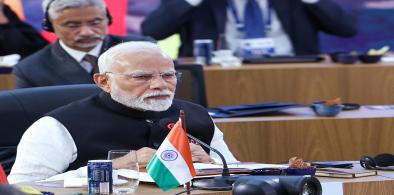


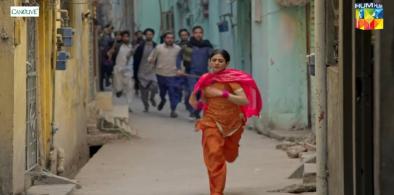







Post a Comment